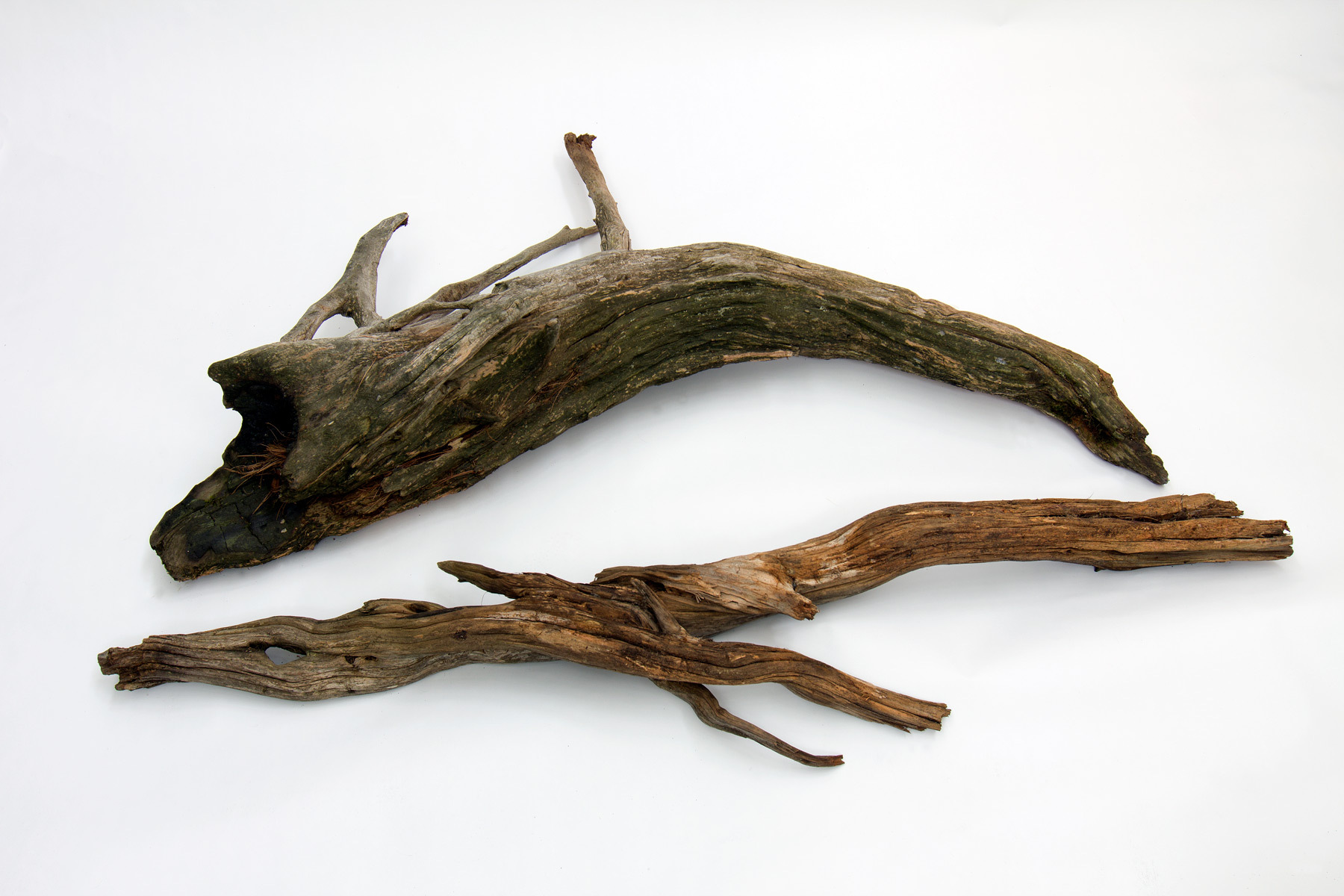In the summer of 1829, in a sleepy Ontario sheep-farming settlement called Baldoon, the McDonald family found themselves tormented by their two-storey home. Without warning, beams would drop from the ceiling, and at night, the kitchen filled with the noise of marching feet. Over the years, the disturbances grew more terrifying. Fires spontaneously ignited. Rocks and bullets rained down on the house. Once, a twenty-five-centimetre hunting knife tore through the air.
Listen to an audio version of this story
For more audio from The Walrus, subscribe to AMI-audio podcasts on iTunes.
News of the paranormal attacks spread, with dozens of people narrating first-hand accounts of what the Detroit Gazette called “the pranks of some invisible and mischievous visitor.” The pranks converted the staunchest of nonbelievers. Even a reporter for Toronto’s Globe, bragging of his “well-rounded distrust of ghost stories,” ultimately changed his mind to become “skeptic of skeptics.” By 1831, a desperate McDonald family realized they needed professional help, so the patriarch, John, travelled 200 kilometres—three days on horseback, riding dawn to dusk—to consult with a highly recommended healer. According to an 1871 account by John’s son, the diagnosis required gazing into a moonstone, which revealed “a long low log house” where lived a witch and the source of the McDonalds’ suffering. The witch took the form of a black-headed stray goose, and it was decided that, if they shot the goose’s wing with a sterling silver bullet, they’d at once stop her—which they did. The ghost never struck again.
Two centuries later, the Baldoon mystery reigns as one of Canada’s greatest ghost stories—you can find tellings and retellings in just about every collection of Canadian folklore. Less well known, perhaps, is the person who ultimately solved it: John Troyer, a man legendary at the time for his unconventional talents in herbal remedies, fortune telling, white magic, bloodletting, water dowsing, exorcisms, and of course, witch hunting. He was also my distant uncle.
I stumbled on Troyer a few years ago while researching the Amish arm of my family tree. I was determined to trace my matriarchal history back to Magdalena Mast, a woman who fled persecution in Switzerland before landing in North America, where, according to genealogy websites, between the ages of seventeen and forty-five, she bore fifteen children. Most of Mast’s brood married equally young and had almost as many kids of their own. All except one: John Michael Troyer, her oldest, born in 1753. Among the dense, interwoven Amish lineages in a family tree where eldest sons usually feature prominently, Troyer’s line is a branch that’s been unceremoniously pruned away. Soon after the American Revolution ended, in 1783, Troyer made tracks for the dense bush of what would become Upper Canada and, by all accounts, never returned.
Troyer’s refusal to swear allegiance to an independent America might have been his official reason for fleeing, but as I’d often learn, nothing with him was ever straightforward. By then, Troyer didn’t even identify as Amish, instead adopting the more mystical beliefs of an Anabaptist offshoot sect later called the Tunkers. Perhaps, before the Amish could shun him, he left of his own accord. Whatever his reasons, he packed everything he could into a Conestoga wagon pulled by four horses and headed north. With his wife, Sophronia, and their two children, nine-year-old Michael and five-year-old Barbara, Troyer covered 800 kilometres of gruelling terrain filled with bears and rattlesnakes. Luckily, they kept diligent records of the journey, which, according to a genealogy book written in the 1980s by a descendant, included a trek “up the Susquehanna River, across the Finger Lake region in New York to below present Buffalo and into Canada.”
Home was fifteen secluded acres on the shores of Lake Erie, still known today as Troyer’s Flats. He built a log cabin and planted a lush orchard of apples, peaches, and pears. He later added a grist mill and a blacksmith forge. By the time he officially petitioned for the land, in 1797, Troyer had established himself as “Doctor Troyer,” known for the potions he concocted from herbs, roots, and berries, which were said to cure local maladies.
For the record, Troyer was absolutely not a medical doctor. He had no formal training, and the hocus pocus he employed would have warranted his excommunication from the Amish, who theoretically rejected such superstition. In practice, however, folk magic was rife among the Pennsylvania Dutch, who borrowed the Algonquian word powwow for the mystical beliefs they’d brought to North America. Powwowers provided cures, removed curses, located lost objects, and foretold the future. Many of their folk formulas—and the spells Troyer likely used—would have been included in The Long-Lost Friend: A 19th Century American Grimoire, which was published in 1820 and was, for nearly a century, the most influential manual of magic in America. (To cure baldness? “Pound up peach kernels, mix them with vinegar, and put them on the bald place.”)
Troyer had an “inexplicable sixth sense,” as local historian George Laidler later described it, to find water via hazel twigs and detect precious buried metals. The most precious, at least on the shores of Long Point, Ontario, around 1800, was said to be an iron chest filled with furs and gold buried by David Ramsay, a Scottish fur trader and alcohol smuggler. Convinced he could retrieve the gold with his divining rod, Troyer and his son, Michael, went on a treasure hunt. “On the stroke of midnight, Michael’s spade clanged dully against a metal object,” goes a 1977 retelling by Harry B. Barrett. “Working feverishly, he sprung the rusty hasp and began to pry up the lid.” Unbeknownst to Troyer, alongside the loot, Ramsay had buried a dog’s corpse as a guardian. “Suddenly before his horrified gaze a large black dog began to materialize from the chest.” Laidler has the dog “growing bigger and bigger” as father and son “fled in terror to their boat.”
Their reaction wasn’t altogether unreasonable: a black dog is a terrible omen in many folklores but especially in the Germanic legends Troyer would have grown up with. “They’re a manifestation of dark or evil spirits,” explains David Williams, podcast host of Fireside Canada and a fierce devotee of Troyer’s, whom he calls Canada’s Van Helsing. “Even if he just saw a black dog, Troyer could well have thought he unleashed a curse.”
Afterward, Troyer indeed seemed to suffer years of bad fortune: Michael fell into a trance, was thought dead for three days and three nights, and was nearly buried alive. Barbara either died young or married and moved away: by 1827, she had disappeared entirely from family records. In 1821, after forty-three years as Troyer’s wife, Sophronia died, leaving Troyer all alone with an increasingly erratic fear of witches that slowly took over his life. He blamed them for all “his troubles of mind and body,” wrote historian E. A. Owen in 1898. A former resident described Troyer as possessing “a thorough knowledge” of “their ways and doings” and as having a knack for “expelling them.”
According to lore, witches can’t pass cold iron, so Troyer nailed horseshoes atop every door.
According to Owen, Troyer believed that his “insanely superstitious” tendencies—which, according to one source, extended to a fear of dark-eyed women—were warranted. “The old doctor,” he writes, “was terribly persecuted by these witches.” Ghost stories, of course, tend to encode a certain misogyny, and evil is often given the face and body of a sorceress—be it crone or beauty. I’m not sure which of these tropes was Jennie Elizabeth McMichael, one of the so-called witches, who lived right next door. The widow had been left to raise ten children. As she no doubt had to be, she was “of strong mind and great courage,” wrote Owen, and “to be considered a witch by the superstitious old doctor was highly amusing to her.” McMichael took to hiding in Troyer’s bushes, popping up to tease and taunt him, and cackling madly at the fright she caused.
In retaliation, Troyer safeguarded his house. According to lore, witches can’t pass cold iron, so he nailed horseshoes atop every door. He kept the metre-and-a-half-long flintlock rifle that he had brought up from Pennsylvania close. When the witches still haunted his dreams, he built a “witch trap”—a modified bear trap that he bolted to the floor and slept beside, set, every night. While they get the details wrong, most every historical account of Troyer mentions the grim device. (Both Troyer’s rifle and bear trap can be found at the Eva Brook Donly Museum, in Simcoe, Ontario.) “The jaws were about three feet long,” wrote Owen. (They’re about half that.) R. S. Lambert, in 1955’s Exploring the Supernatural, exaggerates further, depicting the jaws as “three feet long and two and a half feet high.” In a 1987 short story, Douglas Glover imagines himself as Troyer: “I set a trap at the door of my bed, a contraption of beams and pulleys bolted to the floor. It has nearly been the death of me, twice.”
The witches came for Troyer just the same. Some say it was a vivid nightmare, others say the old doctor mixed a bad potion, but whatever the explanation, Owen’s telling of the story begins: “One night the witches took him out of a peaceful slumber, transformed him into a horse and rode him across the lake.” There, writes Barrett, “the poor doctor stood, tied to a post with nothing but rye straw for sustenance after his exhausting trip, watching through the window the wild ceremonies that lasted long into the night.” Barrett describes a “clandestine dance,” Lambert a “Sabbath orgy.”
This story, to me, is a window into the warped psyche of the pious Troyer, and I’m not the only one with raised eyebrows. “A psychiatrist would have a field day with Troyer’s sexually-inspired fears,” wrote journalist Frank Jones in the Toronto Star in 1984. Could all of Troyer’s eccentricities have been caused by guilt and sexual oppression rooted in a devout Christian upbringing he couldn’t escape? “Wrong, impure sexual thoughts could be caused by demons, bad spirits, and witches,” explains Williams. They could also be visions from what we’d call sleep paralysis but what, in Troyer’s era, was often experienced as a visit from the malevolent “Old Hag” or literal “Night Mare.” After researching the phenomenon across countless cultures and folklores—in Germany, an “alp”; in Japan, “kanashibari”—Williams is mostly convinced that Troyer suffered from a particularly awful case of the affliction.
Most, including Williams, treat Troyer sympathetically as a righteous hero ridding the world of supernatural evils with his own brand of wholesome superstition. This is certainly true of my family, who mostly revel in the myth. Whether history remembers someone as a hero or a villain, it seems, is relative. But, when it comes to actual relatives, whose stories land somewhere between fact and fiction, not to mention between right and wrong, then what? Do you embrace the friendly lore or dig deeper?
Today, devotees of the Baldoon mystery can visit a recreated room from the McDonalds’ haunted cabin (which burned down in 1930) at Ontario’s Wallaceburg Museum before grabbing a beer at The Black Goose pub. But I’m sorry to report that the mystery of John Troyer may never be solved. Maybe he was, as my family insists and the commemorative plaque on his homestead reads, “a sane and respected healer.” Maybe he was just a storyteller, like me.
Troyer died at the ripe old age of eighty-nine. His cabin and mill have long crumbled, but Troyer’s Flats looks largely the same as it always did. I’d like to pay my respects, but his burial site has been lost, the stone stolen. Local gossip says it was scooped, smashed into bricks, and laid into a local fireplace, though whoever has it isn’t telling.





